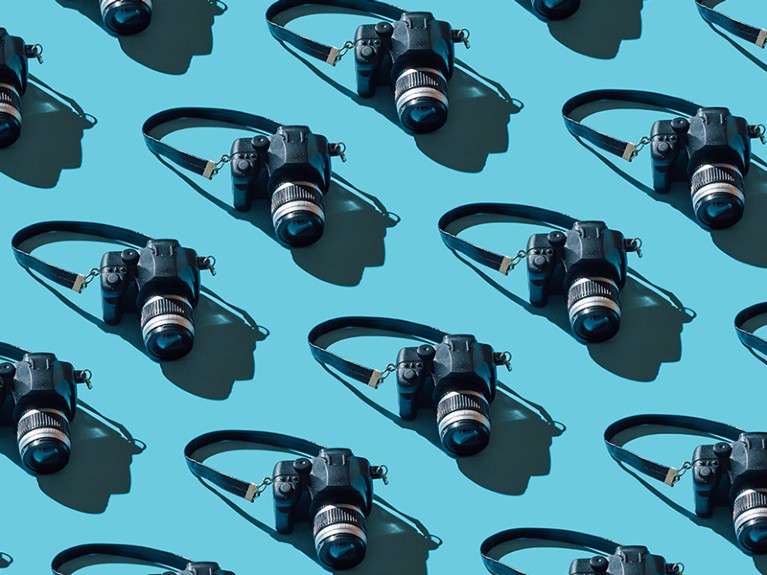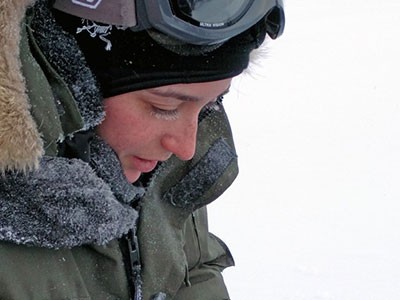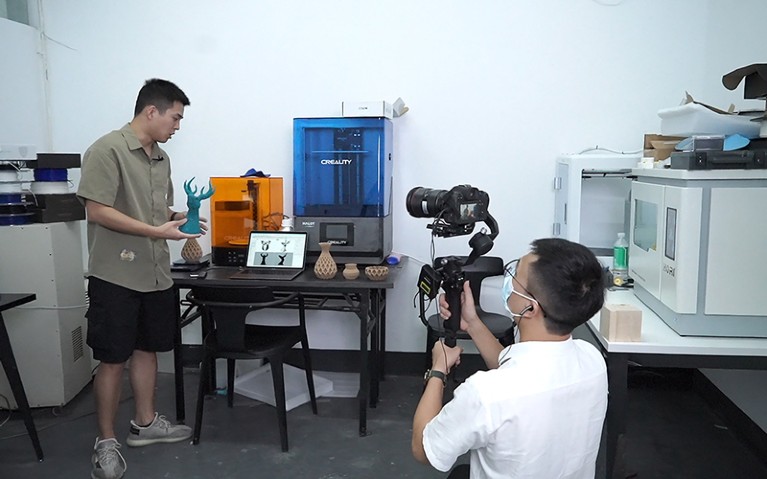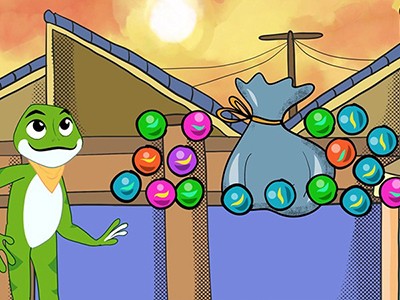[ad_1]

Credit: Getty
About a year ago, my department at the South China University of Technology in Guanghzou invited me to submit a 5-minute video clip about my research laboratory, to be screened at a secondary-school summer camp. With many outreach experiences under my belt after five years as a principal investigator, I was quite confident about getting this done.
Three seconds into filming myself on my phone in my office, I realized that I had been too optimistic. I had to press ‘Pause’ because I couldn’t help looking around the room. And while watching myself on camera, I couldn’t summon the excitement I brought to the classroom — all my finely honed teaching tactics didn’t work well for a video clip. Admitting that my acting career had hit a wall, I decided to switch to a directing role and asked my graduate students to help me to film and present the video.
The 5-minute clip ended up taking 2 hours to finish, but it was so well received by the audience that it motivated me to create an account on Bilibili, one of the leading video-sharing websites in China. I wanted my lab to continue making short films in Chinese on the main topics of our research, which include digital fabrication in architecture and adaptive structures that can respond to stimuli. In the nine or so months since I created that account, our lab vlog has attracted more than 20,000 subscribers and received nearly 3 million views, mainly in China. Our videos, usually about 5 minutes long, have attracted an audience of colleagues, students and laypeople, mostly in their twenties.

The 100 memes that immortalize my PhD defence
As a university professor and structural-engineering researcher with a multidisciplinary background, I am constantly searching for inspiring ways to help people understand and appreciate science. However, the COVID-19 pandemic interrupted my in-person outreach events. At first, my vlog was a hub of short clips in English that I had used as a teaching resource. My students took the lead in editing these clips, translating them, adding Chinese captions and uploading them. Starting out with translated videos was helpful in giving us an idea of what an appealing clip looked like, in terms of duration and style.
One day, I posted a video for my course on 4D printing, which can involve heating a 3D-printed structure to change its shape. In an hour, it received over 20,000 views as well as a few unpleasant comments that caught my attention: “That’s useless”, ”What a stupid idea!” and “Scientists are wasting our money!” These comments brought home to me that it takes guts to talk science to non-specialists from all corners of life.

Nan Hu’s graduate students stepped in to film and present video clips of outreach materials.Credit: Lu Zhu
The negative comments only made me more determined, and at my next lab meeting I raised the idea of launching a lab vlog. Several of my graduate students were over the moon. They had been vlogging for fun in their spare time but had never thought about using vlogs in an academic setting. Just like that, I recruited a vlogging team to coordinate our efforts, and we made our very first original video in early February.
Managing a vlog adds extra hours to my role as a supervisor, but it is a wonderful opportunity to work collaboratively with my students. It takes a team of 2 or 3 students to make each video, and my 14 graduate students and more than 15 undergraduate students take turns to participate. On Mondays, I sit down with them to select topics. Unlike in a research discussion, where I am the leader, my students are the experts in how to make vlogs fun for subscribers. They prepare scripts for two days and select presenters for the clips.
Shooting usually happens on Thursday afternoons. At first we filmed with a smartphone, and later bought a GoPro action camera for better resolution. I have had so much fun when the GoPro is rolling. Sometimes an actor spouts some internet slang and we have to stop filming because the camera operator is laughing too hard.

Collection: Science communication
Shooting clips has created new dynamics compared with our regular lab meetings. My students explained to me how vlogging to hundreds of online viewers is completely different from presenting million-dollar ideas to a grant committee. My students can pick topics that make zero sense to me but go on to receive thousands of likes.
Moreover, vlogging gave me a chance to discover the varied abilities and personalities of my students outside an academic setting. One student who is good at coding also happens to be a video-editing guru. Another student hesitates to try new methods in his research but will take risks with a new filming style. All of my students have been much more outspoken than usual. Vlogging provides them with a unique opportunity to overcome psychological barriers and gain strong communication skills.
Our vlog has even enriched our research. The comment section of each video and the ‘danmu’ — scrolling messages from viewers that appear on top of the video in Bilibili — have become a mini forum in which people post ideas that not only blow our minds but also lead to fresh research projects. We once uploaded a video of an interesting material-design strategy and our subscribers suggested multiple ways to apply it. One subscriber, a lead engineer from a famous footwear company, contacted us to discuss a collaborative project on designing shoe soles with enhanced shock absorption. We are now proposing high-performance midsole designs to them and testing them in our lab.

Broaden your scientific audience with video animation
Trying to capture the joy and curiosity of science on our vlog has been the most fruitful way for me and my students to communicate with broader audiences. My students have seamlessly applied their research skills to vlog-making. They collected key information for scripts, adjusted their presentation styles to suit the audience, and patiently edited and refined videos before posting them. We have found that uploading well-made video clips provides us with a more sustainable and lasting platform for reaching out to the public than in-person events. I often receive e-mails from prospective students who subscribe to our channel and would like to join my research team.
Moving forward, our vlog could become a good place to test ideas before starting a full-blown research project. In my courses, I have started to use videos as a form of assessment, asking students to record clips for homework assignments or course projects. I think that more vlogs by researchers would not only help to demystify research life and academia, but also show realistic images of ourselves, break stereotypes and inspire more people to pursue science.
Competing Interests
The author declares no competing interests.
[ad_2]